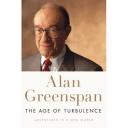I listened the the audio version of this book. The book was long and upon completing the book I thought I have just completed an advanced class on economic. Greenspan really turned this book into a brain dump of his past experience as the Fed chairman. This book should be a must read for an Economic major student. I will probably go back and read the book over again.
In his early life, he was into music and baseball. He was familiar with lots of the baseball statistics – a telltale sign of his talents. He decided to go to school after deciding doing gigs is not good enough for him but he still enjoyed playing Jazz on his saxophone and clarinet.
One thing I admire about him is his ability to create a company (Townsend and Greenspan) from scratch and provide a consulting service to an industry. He is an entrepreneur, not an academia, in his own right.
Greenspan gave a pretty good explanation of the FOMC and Fed organization and how the system works to inject money or remove money from our system. I learned a little of how the politics works in that system.
Greenspan’s views on the past US Presidents were a little surprising. Starting from Nixon, he thinks Nixon’s dark side (bad attitude) toward all ethnics is an equal-opportunity one. He just has a foul mouth but a very intelligent man. Greenspan praised Ford’s calm and steady mentality and credited Ford’s contribution in de-controlling various industries that started US’s prosperity. He did not work with Carter much but did not think too highly of him. Greenspan thought Reagan had a lot of one-liner stories that communicated well to the people. But Reagan has no interest in the details. He gave Clinton high mark for his high intelligence and executing to all the economic reforms, thus enjoying our 1st budget surplus for a long time. But he attributed that to the global dis-inflationary force that created the stock market boom. He didn’t take responsibility for taking the interest rate too low to cause the stock market bubble though. Greenspan did not talk much about George W. Bush except for his reckless fiscal policy, probably for obvious political reasons.
The crisis of 1987 and the dot com bust and the 911 incidents were the crises he faced during his tenure as the Fed chairman. He went to great details on the decisions he made. He believed that he was very fortunate to be the chairman at the greatest disinflation time of our era due to the global forces (2 Billions work forces being joined by China, India, and Eastern Europe). But he warned that at sometime, this disinflation force will cease and the inflationary force will kick in. I believe we’re seeing the material supply inflation now but the labor force inflation will kick in later as the world labor force got brought up to full employment.
He spoke eloquently about creative destruction – how the old industries (telephone) got destroyed to make ways for new industries (mobile phones). This is necessary to maintain high level of productivity, thus sustaining the rate of growth for capitalism. Japan’s banking industry were not allowed to go through the creative destruction – not in the cards for Japanese culture. Thus it took Japan more than 20 years to clear out their mess.
Greenspan was amazed by how the communism collapsed so quickly and was able to try out market capitalism so quickly. It proves that Adam Smith’s invisible hand are working its magic. Central planning just doesn’t cut it. Through market capitalism the central government will gradually lose its power and grip over its people. Can the new revisionist communist (like China) handle the loss of its power base? It’s a slippery slope for them.
Greenspan emphasized that the essence of the market economy is the protection of the property right. I never thought about this being the fundamental building block of our free market economy. Does it mean that US has the competitive advantage over the other countries like China, which does not yet protect the property rights of the people. Will China improve or backtrack? Very interesting.
His prediction for the global economy of 2030: somewhat dire for Europe but promising for Asia. Risk of inflation after the global disinflation effect subsided may be one of those risk areas – it’s going to be the age of turbulence. In other words, the low-interest rate party is going to be over soon. Will the US economy be resilient enough the sustain all the shocks and turbulence? Fed’s job is getting tougher. Is he glad he has retired?

